
Ruby-throated hummingbird at John Clayton trumpet honeysuckle
Nothing is sweeter
than seeing a hummingbird visit your yard. Sugar-water feeders are one way to attract these vibrant birds, but an even better bet is an abundance of flowering plants that they love. Grow perennials to keep hummers coming back each year.
Cardinal flower stems offer many blooms for ruby-throated hummingbirds.
Plant with Purpose
"If we want to truly support birds, our first instinct must be to create native habitat," says Becca Rodomsky-Bish, a project leader for the Cornell Lab of Ornithology. "While sugar-water feeders are a fun way to pull birds in close to our homes, they don't resolve the long-term issue that many birds such as hummingbirds can have, which is where to forage for native food resources." Hummingbirds may consume about half their body weight in nectar each day, feeding approximately every 10 to 15 minutes. (They also eat small insects, especially during nesting season.) All that sipping means they require access to many blooms every day. Native perennials are a terrific option to fill that demand.
Bee balm is native to North America and attracts pollinators such as the ruby-throated hummingbird.
"Plants that are attuned to your region will bloom and produce what is needed, when it is needed," Becca says. "Provide a variety of plants that produce flowers at different times in the season to best align with the resources hummingbirds require to successfully recover after long migrations, raise their young and fuel up to prepare for their fall migrations."
この記事は Birds & Blooms の June/July 2022 版に掲載されています。
7 日間の Magzter GOLD 無料トライアルを開始して、何千もの厳選されたプレミアム ストーリー、9,000 以上の雑誌や新聞にアクセスしてください。
すでに購読者です ? サインイン
この記事は Birds & Blooms の June/July 2022 版に掲載されています。
7 日間の Magzter GOLD 無料トライアルを開始して、何千もの厳選されたプレミアム ストーリー、9,000 以上の雑誌や新聞にアクセスしてください。
すでに購読者です? サインイン
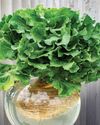
Basics of Hydroponics
Use these top tips and plant picks to have a successful soil-free garden
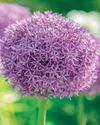
Rooted in Resilience
These hardy perennials will thrive in most zones
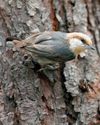
Social and Supportive
Brown-headed nuthatches take a helpful approach to raising their young

All About Owl Pellets
And why you should give a hoot about them
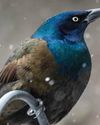
Ask the Experts
Advice from our pros about houseplants, bird feeding and more
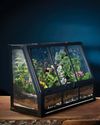
BRING THE OUTDOORS IN
Making a terrarium is about as close as you can get to a Zen DIY project. Once you have gathered the proper materials and squared away your plant selections, it's as simple as layering it all together and watching your mini ecosystem thrive. Here, I'll walk you through my foolproof process and cover all the required elements for good filtration, healthy soil, strong root growth and resistance against fungus and disease.

GROW THIS. NOT THAT
Six easy-to-grow houseplants—and six that may not be the right choice for you

Winter MAGIC
Forecasts may be frigid, but grab your binoculars because birding opportunities are still incredible

Sense or Nonsense? - Why some birds can taste and smell - but others can't
Does a porcelain berry taste like a blueberry to a gray catbird? Does a block of lard smell like frying bacon to a northern flicker? The short answer is no. While some avian species do have a well-adapted sense of taste or smell, they can't distinguish between flavors and odors the way humans can. They're not picking up every ingredient in the suet you put out, says José Ramírez-Garofalo, an ornithology researcher at Rutgers University in New Jersey and the director of Freshkills Biological Station in Staten Island, New York.

Maple Mania - Amazing facts about this fall foliage mainstay
Amazing facts about this fall foliage mainstay